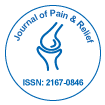当社グループは 3,000 以上の世界的なカンファレンスシリーズ 米国、ヨーロッパ、世界中で毎年イベントが開催されます。 1,000 のより科学的な学会からの支援を受けたアジア および 700 以上の オープン アクセスを発行ジャーナルには 50,000 人以上の著名人が掲載されており、科学者が編集委員として名高い
。オープンアクセスジャーナルはより多くの読者と引用を獲得
700 ジャーナル と 15,000,000 人の読者 各ジャーナルは 25,000 人以上の読者を獲得
インデックス付き
- 索引コペルニクス
- Google スカラー
- Jゲートを開く
- Genamics JournalSeek
- コスモスIF
- レフシーク
- ハムダード大学
- エブスコ アリゾナ州
- OCLC-WorldCat
- パブロン
- ジュネーブ医学教育研究財団
- ユーロパブ
- ICMJE
役立つリンク
オープンアクセスジャーナル
このページをシェアする
抽象的な
Hyper-Acute Toxic Delirium In A Patient Using Transdermal Fentanyl
Delicou Sophia, Kourouni Ismini, Samarkos Michael, Kouzis Panagiotis , Mantzourani Marina
The unpredictable, recurrent, intense, and frequently persistent nature of pain associated with sickle cell disease poses a difficult challenge in terms of management. The long-term treatment of non-malignant pain with opioids has traditionally been a matter of debate globally due to the perceived fears of addiction, toxicity and tolerance [1]. In the past decade, opioid analgesics have been advocated by some medical professionals for the treatment of refractory non-malignant pain. For patients with SCD and chronic pain, the pain differs from other forms of chronic pain (e.g., cancer pain) in that sickle cell pain is typically associated with episodic and chaotic waxing and waning acute pain on top of chronic pain. There is also likely to be a larger component of neuropathic pain, peripheral and central sensitization to pain, and opioid hyperalgesia in patients with SCD. In addition, unlike individuals with cancer who have pain, patients with SCD live with this pain for decades? Transdermal fentanyl (Duragesic) is indicated for patients who require continuous opioid administration for the treatment of chronic pain that cannot be managed with other medications such as short-acting opioids on an as-needed basis or non-opioid analgesics. Pain should be under relatively stable control prior to the initiation of transdermal fentanyl, since meaningful pain relief is not obtained until 12-16 hours after application.We describe here the case of a fifty-year-old woman with sickle cell/beta thalassemia complicated by multiple painfull crisis admissions and suspected opioid abuse, who manifested unusual psycho-mimetic reactions after the first-time application of transdermal fentanyl.

 English
English  Spanish
Spanish  Chinese
Chinese  Russian
Russian  German
German  French
French  Portuguese
Portuguese  Hindi
Hindi